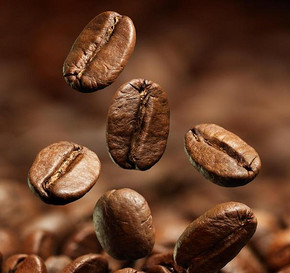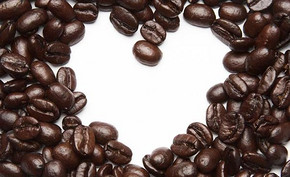Jamaican coffee production and cultivation in Jamaican coffee producing areas
Pay attention to coffee reviews (Weixin Official Accounts vdailycom ) and find a beautiful cafe to open your own shop
Blue Mountain coffee taste alcohol is, acid, sweet, bitter moderate, exudes an attractive elegant atmosphere.
Jamaica island area is not large, the Blue Mountains are located in the northeast of Kingston, the capital city, because the mountains in the Caribbean Sea surrounded by, whenever the weather is clear days, the sun shines directly on the blue sea, the peaks reflect the bright blue light of the sea, so named.
Blue Mountain peak elevation of 2256 meters, is the highest peak in the Caribbean region, is also a famous tourist attraction.
Located in the coffee belt, it has fertile volcanic soil, fresh air, no pollution, humid climate, foggy and rainy all year round (average precipitation is 1980 mm, temperature is about 27 degrees), which has created the world-famous Jamaica Blue Mountain Coffee and the highest price coffee in the world.

In 1717, King Louis XV of France ordered coffee to be grown in Jamaica. In the mid-1920s, Nicholas, governor of Jamaica, ordered coffee to be grown in Jamaica. Nicholas Lawes imported Arabica seeds from Martinique and began planting them in St. Andrew.
To this day, St. Andrew's is one of the top three growing regions for Blue Mountain coffee in Jamaica, along with Portland and St. Thomas. Within eight years, Jamaica exported more than 375 tons of pure coffee.
Coffee production peaked in 1932, harvesting more than 15000 tons of coffee. The Government of Jamaica established the Jamaica Coffee Industry Board in 1950 to establish quality standards for Jamaica coffee and oversee the implementation of quality standards to ensure the quality of Jamaica coffee.
The Commission awards a special official seal to Jamaica's exports of green and roasted coffee and is the world's highest national coffee authority.
At present, the origin of Blue Mountain Coffee can be represented by Mafis River Embankment Central Factory (M.B.C.E.), Blue Mountain Coffee Cooperative Factory (M.H.C.C.T.), Portland Blue Mountain Coffee Cooperative Plant (P.X.X.S.H.), Coffee Industry Association (Wallenford), Coffee Industry Association (St. John's Peak) and Blue (J.A. S).
By 1969, the situation had improved, as Japanese loans had improved the quality of production and thus secured the market. By now, the coffee has reached the point of being fanatically loved. By 1981, about 1500 hectares of land in Jamaica had been cleared for coffee, followed by another 6000 hectares.
In fact, today's Blue Mountain region is a small area of only 6000 hectares, and it is impossible that all the coffee labeled "Blue Mountain" is grown there. Another 12000 hectares are devoted to growing two other types of coffee: alpine premium coffee and Jamaica premium coffee.
Blue Mountain coffee beans are grown in the Blue Mountains east of Jamaica. If you also love Blue Mountain Coffee, you may wish to follow the 258 platform Xiaobian to learn about the history of Blue Mountain Coffee.
In 1717 King Louis XV of France ordered coffee to be grown in Jamaica, and in the mid-1920s Sir Nicholas Lawes, governor of Jamaica, imported Arabica seeds from Martinique and began to promote cultivation in St. Andrew. To this day, St. Andrew's is one of the top three growing regions for Blue Mountain coffee in Jamaica, along with Portland and St. Thomas. Within eight years, Jamaica exported more than 375 tons of pure coffee. Coffee production peaked in 1932, harvesting more than 15000 tons of coffee.
The Government of Jamaica established the Jamaica Coffee Industry Board in 1950 to establish quality standards for Jamaica coffee and oversee the implementation of quality standards to ensure the quality of Jamaica coffee. The Commission awards a special official seal to Jamaica's exports of green and roasted coffee and is the world's highest national coffee authority. Mavis Bank Coffee Factory(M.B.C. F), Blue Mountain Coffee Cooperative Factory (M.H.C.C.T.), Portland Blue Mountain Coffee Cooperative Plant (P.X.X.S.H.), Coffee Industry Association (Wallenford), Coffee Industry Association (St. John's Peak) and Blue (J.A. S).
By 1969, the situation had improved, as Japanese loans had improved the quality of production and thus secured the market. By now, the coffee has reached the point of being fanatically loved.
Important Notice :
前街咖啡 FrontStreet Coffee has moved to new addredd:
FrontStreet Coffee Address: 315,Donghua East Road,GuangZhou
Tel:020 38364473
- Prev

Ethiopian coffee cultivation, Ethiopian coffee bean characteristics
Weixin Official Accounts vdailycom found a nice cafe to open its own shop Global warming could make nearly 60 percent of coffee produced in Ethiopia unsuitable for farming coffee by the end of the century, a notice released Monday in a research report. Illicit drug crop cultivation is four times more likely to be offshoring in other parts of the country, highlights the study published by Natu
- Next

How to make good Blue Mountain Coffee
Following Cafe Review (Wechat official account vdailycom) found that Beautiful Cafe opened a small shop of its own suggested dosage: about 10-15g Blue Mountain Coffee Powder per cup, brewing 6-8oz coffee. To use a siphon pot to brew Blue Mountain Coffee: the first step is to grind the beans, fineness: 4.5 step 2: under the filter to avoid gaps between the filter and the glass container, because the gap will not only make the coffee
Related
- Detailed explanation of Jadeite planting Land in Panamanian Jadeite Manor introduction to the grading system of Jadeite competitive bidding, Red bid, Green bid and Rose Summer
- Story of Coffee planting in Brenka region of Costa Rica Stonehenge Manor anaerobic heavy honey treatment of flavor mouth
- What's on the barrel of Blue Mountain Coffee beans?
- Can American coffee also pull flowers? How to use hot American style to pull out a good-looking pattern?
- Can you make a cold extract with coffee beans? What is the right proportion for cold-extracted coffee formula?
- Indonesian PWN Gold Mandrine Coffee Origin Features Flavor How to Chong? Mandolin coffee is American.
- A brief introduction to the flavor characteristics of Brazilian yellow bourbon coffee beans
- What is the effect of different water quality on the flavor of cold-extracted coffee? What kind of water is best for brewing coffee?
- Why do you think of Rose Summer whenever you mention Panamanian coffee?
- Introduction to the characteristics of authentic blue mountain coffee bean producing areas? What is the CIB Coffee Authority in Jamaica?

